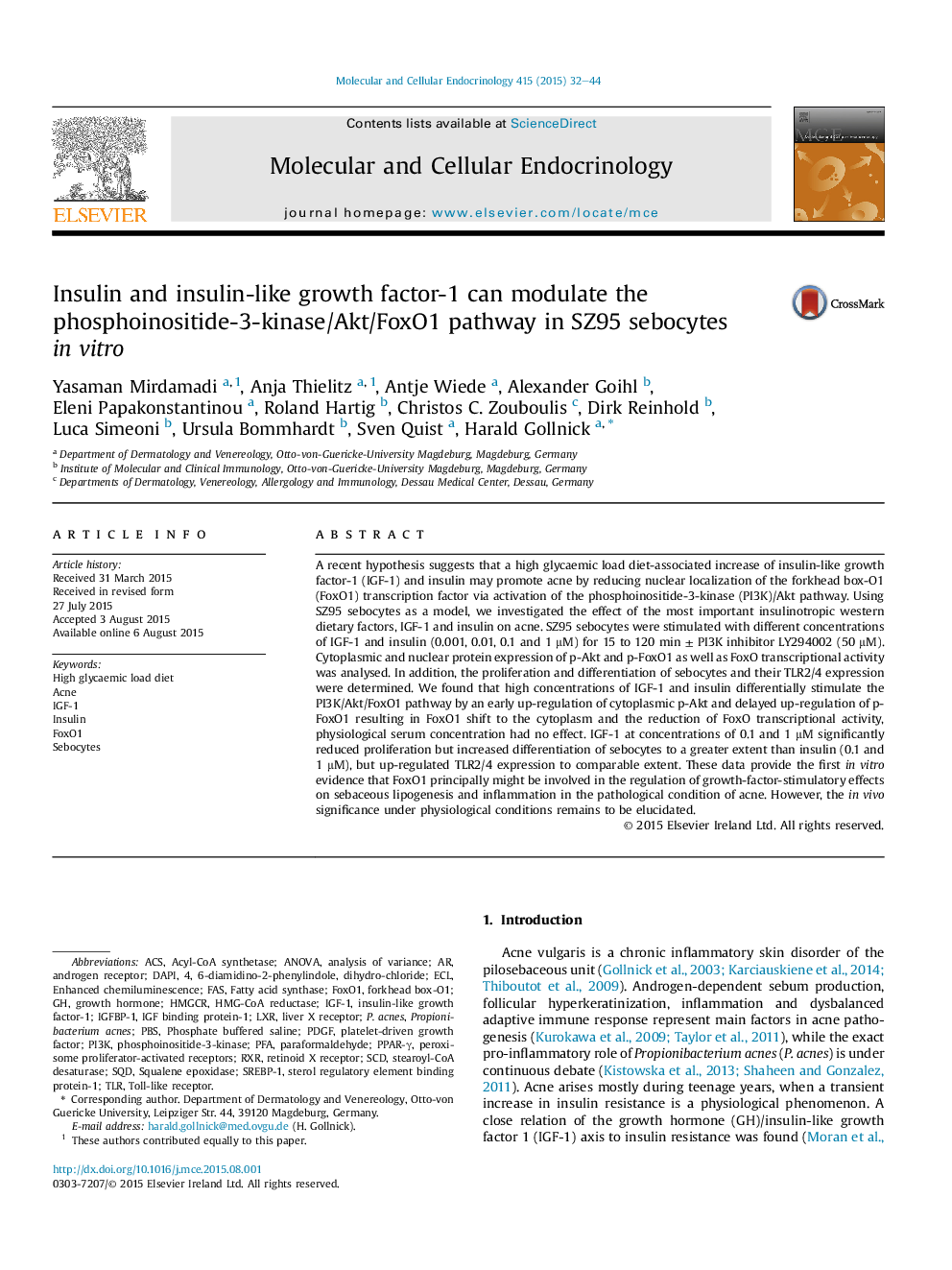| کد مقاله | کد نشریه | سال انتشار | مقاله انگلیسی | نسخه تمام متن |
|---|---|---|---|---|
| 2195697 | 1550863 | 2015 | 13 صفحه PDF | دانلود رایگان |

• We investigated the role of FoxO1 as a putative regulator in the acne pathogenesis.
• IGF-1 and insulin activate PI3K and up-regulate p-Akt and p-FoxO1 in SZ95 sebocytes.
• IGF-1 and insulin reduce nuclear FoxO1 and its transcriptional activity.
• SZ95 differentiation increases and proliferation decreases via PI3K activation.
• IGF-1 and insulin increase expression of pro-inflammatory TLR2/4.
A recent hypothesis suggests that a high glycaemic load diet-associated increase of insulin-like growth factor-1 (IGF-1) and insulin may promote acne by reducing nuclear localization of the forkhead box-O1 (FoxO1) transcription factor via activation of the phosphoinositide-3-kinase (PI3K)/Akt pathway. Using SZ95 sebocytes as a model, we investigated the effect of the most important insulinotropic western dietary factors, IGF-1 and insulin on acne. SZ95 sebocytes were stimulated with different concentrations of IGF-1 and insulin (0.001, 0.01, 0.1 and 1 μM) for 15 to 120 min ± PI3K inhibitor LY294002 (50 μM). Cytoplasmic and nuclear protein expression of p-Akt and p-FoxO1 as well as FoxO transcriptional activity was analysed. In addition, the proliferation and differentiation of sebocytes and their TLR2/4 expression were determined. We found that high concentrations of IGF-1 and insulin differentially stimulate the PI3K/Akt/FoxO1 pathway by an early up-regulation of cytoplasmic p-Akt and delayed up-regulation of p-FoxO1 resulting in FoxO1 shift to the cytoplasm and the reduction of FoxO transcriptional activity, physiological serum concentration had no effect. IGF-1 at concentrations of 0.1 and 1 μM significantly reduced proliferation but increased differentiation of sebocytes to a greater extent than insulin (0.1 and 1 μM), but up-regulated TLR2/4 expression to comparable extent. These data provide the first in vitro evidence that FoxO1 principally might be involved in the regulation of growth-factor-stimulatory effects on sebaceous lipogenesis and inflammation in the pathological condition of acne. However, the in vivo significance under physiological conditions remains to be elucidated.
Journal: Molecular and Cellular Endocrinology - Volume 415, 5 November 2015, Pages 32–44